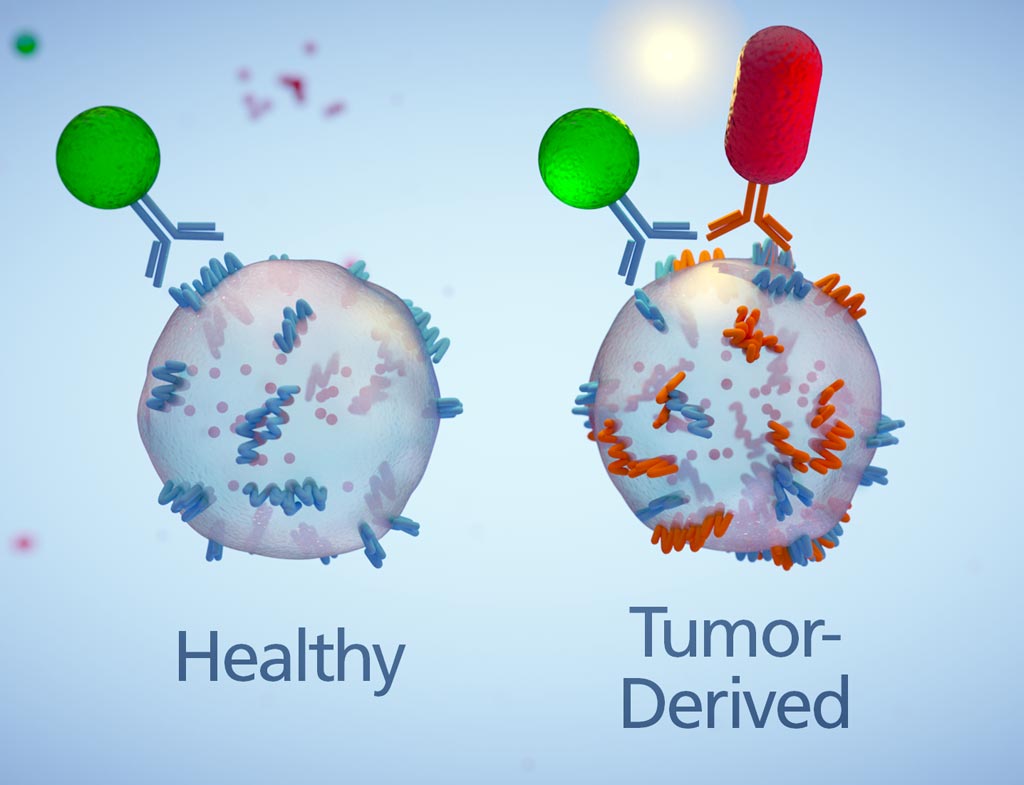Marker Detection Leads to Earlier Pancreatic Cancer Testing
By LabMedica International staff writers
Posted on 15 Feb 2017
With nanoplasmonic technology that enabled quantification of tumor-derived extracellular vesicles (EVs) in patient blood plasma microsamples, researchers have developed a noninvasive, inexpensive, rapid test for early diagnosis of pancreatic cancer (PC) as well as for monitoring of treatment-response and cancer burden in patients with PC.Posted on 15 Feb 2017
PC may display no obvious symptoms in its early stages, yet can develop aggressively. According to the American Cancer Society, a staggering 80% of those stricken with this form of cancer die within 1 year of diagnosis. Currently, the only cure for pancreatic cancer remains surgical removal of diseased tissue, but in many cases this is not feasible due to the degree of cancer spread at the time of diagnosis. PC cases are often characterized by high rates of therapy resistance, so improved treatment monitoring is urgently needed so that personalized treatments can be quickly modified to improve individual patient outcomes.

Image: A new technique for identifying tumor-derived extracellular vesicles (EVs) relies on differently shaped nanoparticle probes that refract light at different wavelengths, one spherical (green) and one rod-shaped (red). One probe identifies the surface protein ephA2 linked with pancreatic cancer; the other probe identifies a common EV surface protein. Only pancreatic cancer-derived EVs express both proteins and thus bind both nanoparticles to emit a brilliant yellow signal that allows these disease-linked EV’s to be easily detected for diagnostic purposes. This method can also be used to monitor effectiveness of anti-cancer treatment by measuring abundance of tumor-derived EV’s over the course of therapy (Photo courtesy of Arizona State University / Jason Drees).
Tony Hu (Ye Hu), a researcher in the Biodesign Virginia G. Piper Center for Personalized Diagnostics, and his colleagues have devised a method to identify PC early in its development. Their technique relies on the sensitive detection of EVs, and on the ability to accurately detect a PC tumor biomarker – the surface protein EphA2. Identification of tumor-associated EV proteins, such as EphA2, and better understanding of the role of EVs in tumor development and metastasis may thus open a new chapter in cancer diagnosis and treatment monitoring. Better understanding of the specific factors that control EV actions to promote cancer may lead to discovery of new mechanistic targets for development of custom-tailored
“Pancreatic cancer is one type of cancer we desperately need an early blood biomarker for,” said Dr. Hu, “Other technology has been used for detection, but it doesn’t work very well because of the nature of this cancer. It’s really hard to capture an early diagnostic signal when there are no symptoms. It’s not like breast cancer, where you may feel pain and you can easily check for an abnormal growth.”
The new research demonstrated that a platform based on interaction between two different nanoparticles originating from EVs can keenly discriminate between blood samples from patients with either PC or pancreatitis or from healthy subjects.
The study, by Liang K et al, was published online February 6, 2017, in the journal Nature Biomedical Engineering.













